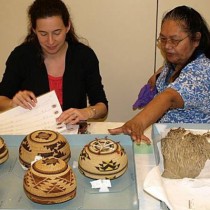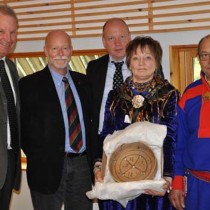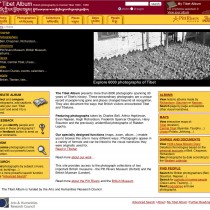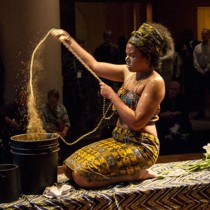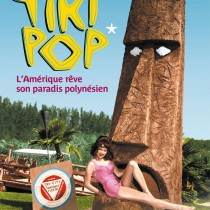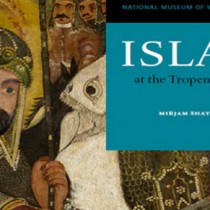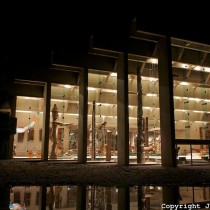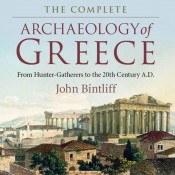The past (both distant and recent) of an institution
In The Poetics and the Politics of Exhibiting Other Cultures by Henrietta Lidchi, “ethnography” is defined as the science that studies and describes population groups (“nations”), their habits and customs as well as their differences from other groups (1997, p. 160). The collection of data on a particular culture of a group is carried out through the fieldwork of a specialist and completed by a published text, which in turn is named ethnography. Fieldwork often includes the material culture of the group being studied with objects considered as important being collected and exhibited in museums referred to as ethnographic.
Specifically, these are sites that present cultural diversity in a tangible way, while highlighting elements that make each population group culturally distinct and worthy of study. Although folklore museums can also be included in those of ethnography as places where a local cultural identity is constructed and represented through time, the use of the term “ethnography” initially refers to the exhibition of the material culture of “indigenous”, “native”, “exotic” groups –usually without the knowledge or widespread use of writing. In other words, these are groups primarily studied by anthropologists (Lidchi 1997, p. 161).
As directly related to the development of anthropology as a science during the period of colonialism, these museums are particularly interesting not only epistemologically (for what and how we know about the Other) but also politically. The attraction of the Other, whether more or less primitive, became subjected to procedures by specialists of documentation and grouping and finally became part of an evolutionary format for the classification of world cultures in which Europe appeared to have a leading part. In this way, 19th and 20th century ethnographic museums contributed considerably in establishing and scientifically justifying the hegemony and colonialism of Western Europe to the non-Western world. Through a mutual relationship between knowledge and power, the museum phenomenon became widespread at the same period that Eurocentrism established itself worldwide as a dominant political and cultural system and the West shaped the identity of the modern citizen in the nation-states of Europe.
This relation between ethnographic museums and anthropology fell into disuse after the 1920s, when anthropologists’ research interests focused more on the analysis of the social structures and functions of cultures being studied and less on their material culture. Several decades had to elapse before both objects and the museums housing them returned to the center of social and museological research, a movement which arose in the 1980s.
Moreover, the political and economic conditions following the Second World War and the independence of former colonies led the West to reexamine its dominant cultural narratives. Global decolonization processes would herald a long period of self-reflection and a critical review of the political role played by Europe and its national museums, and would now demand a radically different way of representation or even self-representation of indigenous populations (hereafter: source communities). But how were ethnographic museums of Western capitals now to become socially legitimate? How could they critically confront practices of violent economic exploitation and hegemony of indigenous populations and their land while simultaneously keeping the material trophies of colonialism in their showcases? And, if museums continued to own these collections as historical evidence of a bygone era, who would have the right to talk about them?
Starting in the 80s, these structural questions would determine the operation of ethnographic institutions, impelling museums to develop bonds with the source communities of their collections. Museum professionals and those studying the material culture of distant, exotic and exoticized cultures now devote time and energy to allowing their erstwhile colonial institutions to continue to exist not as remnants of a political system of hegemony over the Other but as contact zones: this term coined by Mary Louise Pratt found an ideal framework for development, definition and signification in the texts of James Clifford (1997). Moreover, in recent years it has established ethnographic museums as places of communication between the West and the rest of the world, and a field of fermentation between representations of cultural diversity and anthropological theory. Museum professionals communicate and collaborate with offspring members of ethnic groups; they involve them not only in their events and decisions, but also in the management and interpretation of their collections. Descendants of Native American tribes of the United States and Canada, for example, are asked about the symbolic meaning of museum objects, and participate in museum events. Their recollections and views are included in exhibitions, and – what is even more impressive – objects are lent or, more rarely, returned to their now symbolic owners, in the context of ceremonies that commemorate the victims of colonialism (fig. 1, 2). These are developments that reflect the museums’ need not only to both rid themselves of their colonial past and adopt a perspective in which the West is not the sole necessary protagonist in the production of knowledge, but also to widen their audience by challenging the very authority of their curators.
These changes in the character of ethnographic museums are related to dealing with and negotiating cultural difference as well as to their actual collection policies (Geismar & Tilley 2003). How have collections of exotic and primitive artefacts developed and extended to the present? What is it produced as “native” arts that is judged as “authentic” and worth being acquired by a Western ethnography museum or even by a national museum of some former colony?
Globalization has irrevocably upset the old and rather simplistic categorizations between us and them, here and there. The Others are no longer so distant and exotic as they were – or rather, as they were considered in the past. They live not only far away but also amongst us: in the multiethnic countries of the West, in big cities, schools, athletic teams, public spaces, mass media, social media, and travel.
If, however, places and identities are no longer static and have lost the clarity given to them by traditional anthropology, then what should a museum show and to whom? Who and in whose name will the interpretation and social responsibility arising from the museum “construction” of cultural diversity be undertaken? How can ethnography museums acquire up-to-date ideological concerns and respond to changes in the global, social and economic landscape, to the demographic changes resulting from extensive migration as well as to the constant rise of nationalism in Europe?
University teachers and museum professionals from all over the world shared their concerns on these issues at the final conference of the European program “Ethnographic Museums and Cultures of the World” organized in Oxford in July 2013, while proposing ways for ethnographic museums to acquire essential affinity and interaction with global debates on identity, cultural diversity, and social values of today. Part two of my text is based on and inspired by the exchange of ideas that took place at this conference (note 1).
Present and Future: Ways of approaching the public
What makes an exhibition ethnographic? At the conference there was much discussion on the elements that constitute an ethnographic museum and that differentiate it from others. Kavita Singh (note 2) summed it up as follows:
-The collection and presentation of the particularity of the Other.
-The right imposed by a population, due to its knowledge and power, to collect the objects of others.
-The collection and presentation of objects not so much for their aesthetic value as for their power to act as evidence of a culture from which they were torn.
-The museum’s effort to contextualize objects and highlight a past or even lost cultural field of reference. This is an element that has linked ethnographic museums with the museographic practice of the diorama (often life-size representations of everyday scenes from the life of the cultures being studied). The theoretical and broader dramatic potential of dioramas have a strong influence on the viewer, a fact that over the past years has been an object of multiple criticisms in the museological analysis of exhibitions.
These facts, however, now tend to be a feature of good practices (as these are understood) of many non-ethnographic museums challenging us, according to Singh, to picture the future of all museums as fundamentally ethnographic. Placing objects and testimonies in a new framework, particularly by using reconstructions, is a feature of historical and archaeological representations which, like those of ethnography, no longer focus solely on material culture but expand their exhibitions and collections to include the so-called “intangible” cultural heritage, oral history, digital environments etc. National art museums and major art events such as the Biennales are representative in their particular national, ethnic and cultural features. Here curators function as ethnologists, i.e. as researchers of cultural diversity, while events of most active museums in the world – whether related to exhibitions, collections or education – feature the collecting, display and interpretation of diversity.
However, the reverse also happens: the sciences or branches of sciences that till now developed in specific museums, now cross the threshold of ethnographic museums, casting doubt on previous scientific certainties, while the future of ethnographic museums appears to be moving among a variety of experiments, opening up to the world of art and to the potential offered by digital technology. The latter not only facilitates communication and the expansion of knowledge but also contributes to the development of serious bonds and partnerships with reference to communities around the world, whether indigenous or not, always regarding museum collections and events (fig. 3). Furthermore, over the last decade, ethnographic museums have borrowed elements from history or art museums as they search for an innovative design, one that does not represent cultures as autonomous, rooted and independent and material culture as a set of strictly defined category of objects, but as a cause for mobilizing social relations, and as material that has its own social biography (note 3). Lastly, special mention should be made to the imaginative ways in which ethnographic museums interpret their collections and above all make them relevant to the interests of today’s public. Many museums become involved in artistic projects, sometimes allowing their permanent collections or their storerooms to be used as inspiration by contemporary artists, some of whom do not hesitate to comment visually on the colonial history of the museum institution hosting them. Performance, art and music events inspired by the exhibits now constitute a common practice of many museum organizations that allow them to be led, even temporarily, to new experimental proposals in connection with the semantics of exhibits (fig. 4).
Is multiculturalism dead? Dealing with diversity in the present
Despite the dynamic function of contemporary ethnographic museums, the political and demographic challenges of our times, the rise of nationalism and racism in Europe and the sweeping cuts to culture brought on by the economic crisis have decisively affected museological debate on the future of ethnographic museums.
To many, the values of multiculturalism that were cultivated in the West over the second half of the 20th century – in relation to the end of colonialism and the massive flow of migration to Europe and North America – are under the pressure of new political and economic conditions. The spread of multiculturalism – brought about by globalization and the intersecting paths of people, capital, ideas and goods in countries where people from different cultural backgrounds coexist – seems to have come up against obvious or less obvious theories of social exclusion. Policies of economic strangulation and political isolation of immigrants and the countries of their origin; the explosion of crime, unemployment and social inequality; the predominance of conservative or xenophobic political forces (directly linked to the above); the policing of borders as a practice of exclusion, and the revival of a national agenda that reestablishes the “virtues” of a citizen of an erstwhile and homogeneous nation-state; all threaten the function, and even the survival of the postcolonial (or, according to James Clifford, post-ethnographic) museum (note 4).
The rise of the far right in European countries also has practical implications for the life of its museums. Policies saturated by racist ideas fail to see and understand the importance and value of ethnographic organizations that are treated as irrelevant or hostile towards the sovereignty of the nation-state. Thus, for example, in 2011, the far right PVV party in Holland (“The Party for Freedom”) described ethnographic museums as unpatriotic because they criticize the country’s colonial past and argued that their funding should be restricted or stopped entirely. As stated by a party spokesman, too much preoccupation with colonialism makes visitors of ethnographic museums feel guilty “so it is not necessary to fund places that make us hate ourselves” (note 5).
In the opinion of Wayne Modest and other conference speakers who are ethnographic museum curators and university teachers, the ethnographic museum, this absolute product of colonialism, can vitally contribute to the development of critical historical thought among the visitors of the new generation (note 6). The open discussion and critical approach to colonialism, racism and violence cultivates within ethnographic museums a different logic that is not Eurocentric: it reveals anthropology’s political and politicized role against colonialism and also, today, gives a voice to ethnic, religious and other minorities. In addition, it fights for social justice, reveals the construction of cultural nostalgia for the primitive and exotic and pinpoints the hybridity and osmosis that in various ways feature in the cultural coexistence of people and groups. Here and There. Then and Now (fig. 5).
For most speakers of the conference, however, the ethnographic museum can and should also contribute to fostering intercultural dialogue and mutual understanding between different national and cultural groups – both within a nation-state and in transnational conditions. This goal can be achieved through museum practices, events and programs that bring together and encourage the interaction of a country’s population, both majorities and minorities with diverse cultural backgrounds (fig. 6). Thus, through the management of the material heritage of museums, both anthropology and museology become two related and interdependent ways of seeing things, past and present (fig. 7).
Lastly, as a “contact zone”, the museum also allows the shaping of a cosmopolitan identity reinforced by the development of tourism. In the ethnographic museum, visitors are able to feel like citizens of the world, to experience intercultural communication, and to develop political awareness and empathy towards not only a different but also their own particular cultural and historical identity. They can understand how the We and They are created, how cultural difference is imprinted through representation, and “show” others who they are and how they feel. In the xenophobic times we are experiencing in the current economic crisis, it seems to be more urgent and necessary than ever before, for museums to actively participate in addressing intolerance towards the Other, whether near or far away.
If Others concern us, then maybe the time has come to accept that the construction of cultural difference by ethnographic museums is not related only to the past, to forgotten tribes and exotic cultures. It is primarily related to the present, the intercultural interpretation of things and the agonizing effort for a better life in a world we all share.
Esther Solomon
Lecturer in Museology, University of Ioannina
ILLUSTRATING ETHNOGRAPHIC MUSEUMS: SOME EXAMPLES
1. The return to the Yurok tribe, in 2010, of sacred objects from the collections of the National Museum of the American Indian constitutes one of the most important moves in the history of the United States to repatriate museum objects. A symbolic ceremony took place in Klamath, California, which for thousands of years had been home to members of the tribe. In the words of a Yurok spokesman, “the return of the objects is the equivalent of the return home of a prisoner of war”. [fig. 1. http://www.sfgate.com/news/article/Yurok-Indians-exult-at-return-of-sacred-cache-3256073.php#photo-2405357, retrieved: 2/10/2014]
2. In June 2014, the director of the Folklore Museum of Norway in Oslo, agreed to repatriate about 2,000 objects (half of the collection), to museums of the Sami ethnic group, the population of Lapland. This decision stems from Norway’s legal obligations towards the country’s indigenous minorities and it encourages the Sami to have greater control over their cultural heritage. [fig. 2. http://www.norskfolkemuseum.no/en/Collections/The-Sami-Collections/Return-of-Sami-Cultural-Heritage/, retrieved: 2/10/2014]
3. The Tibet Album is a virtual museum that provides access to 6,000 photographs taken by members of the British elite in Tibet between 1920 and 1950 and belongs mainly to the archives of the British Museum in London and the Pitt Rivers Museum in Oxford. This is revealing material that throws light on the region’s culture in a given historical period, the British gaze on it as well as the influence of Tibet on the British imagination. Through online access, the visitor is provided with ample ways of exploring the archive, to link up with persons, objects and locations, comparisons etc, while more theoretical approaches to the material are encouraged, highlighting the historical potential of the photograph, its biography as well as a critical analysis of Tibet’s visual history (note 7). Apart from the structure of this digital data base and the possibilities in its use, it is interesting to note the impact of the album on its users and the creation of digital memory communities and new social relations between the members of a nation that is not recognized officially. Tibetans in exile all over the world comment and exchange photographs and information of the archive through the internet, reconstructing their place of origin and identity, even their family history. The “fluidity” of the digital archive – far more flexible than the categorizations of physical objects in the museum – and the manner they reach a wide public that goes beyond the local and the national call for an ethnographic approach to the way museum heritage is used and consumed. [fig. 3. http://tibet.prm.ox.ac.uk/index.php, retrieved: 10/10/2014]
4. The history and collections of ethnographic museums constitute an occasion, topic or source of inspiration for contemporary visual artists who are given hospitality in museum spaces and produce work there. Nathalie Mba Bikoro, an artist from Gabon, often presents events based on issues of community memory and heritage. In 2013, during the exhibition at the Smithsonian National Museum of African Art entitled Earth Matters: Land as Material and Metaphor in the Arts of Africa, Bikoro gave a performance through which the spectator was asked to recognize the consequences of his/her relationship with the planet’s natural resources. [fig. 4. http://africa.si.edu/exhibits/earthmatters/bikoro.html, retrieved: 9/10/2014]
5. The exhibition at the Quai Branly Museum of Ethnography in Paris presents the cultivation of the idea of an exotic paradise that American Pop culture of the 60s identified with the cultures of Polynesia. Tiki – the wood carvings believed to be a feature of all that region’s culture and collected in great numbers by metropolitan ethnographic museums – defined entertainment, tourist imagination, even the style of restaurants and mass culture in America. The exhibition uses the tiki as a basis for reflecting on the meaning and cultivation of cultural nostalgia. [fig. 5. http://www.quaibranly.fr/fr/programmation/expositions/expositions-passees/tikipop.html, retrieved: 9/10/2014]
6. In response to its Indonesian collections, the Tropenmuseum (Museum of the Tropics) in Amsterdam organizes a series of open dialogues with the public. Why did the museum, in its course so far, not collect and classify the objects in its collections (which are among the richest in the world) as Islamic? The museum reflects and assesses older and newer museum classifications of material culture and includes these discussions in actions against Islamophobia cultivated in Holland and elsewhere. [fig. 6. http://tropenmuseum.nl/en/debate/History-of-Disregard, retrieved: 2/10/2014]
7. The Museum of Anthropology of the University of British Columbia, is an interesting example of the functioning of a contemporary ethnographic museum, characteristic of trends that have been followed in the field over the last years. According to the museum’s mission statement, the MOA “will become one of the world’s principal hubs for exhibition, teaching, and research of international visual, intangible, and performative culture, and critical and collaborative museology. It will provide a transformative environment for visitors to learn about themselves and others, and to consider contemporary and historical events and issues from multiple perspectives. It will enhance its international profile while working locally, maintaining and strengthening its focus on First Nations peoples of British Columbia as well as diverse cultural communities. It will embrace interdisciplinarity and champion collaboration. It will provide innovative and imaginative exhibits and programs, and encourage full academic and student participation while promoting UBC’s values, commitments, and aspirations.” [http://www.moa.ubc.ca/ retrieved: 2/10/2014]. Finding a balance between academic research, the emphasis on art, the pressures put on museums by indigenous communities and the securing of funds for costly programs constitutes the biggest challenge faced by the museum today. [James Clifford, “May you live in interesting times”: The Ethnographic Museum Today, http://www.prm.ox.ac.uk/PRMconference_lectures.html, retrieved: 2/8/2014).
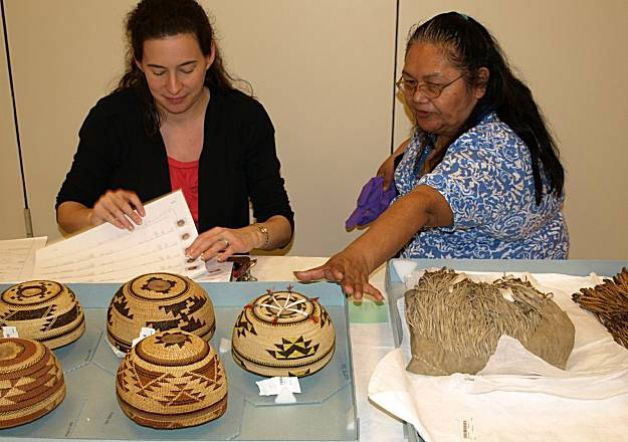
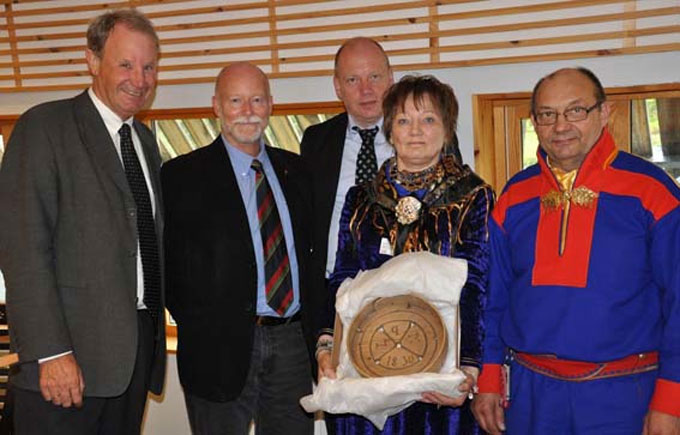
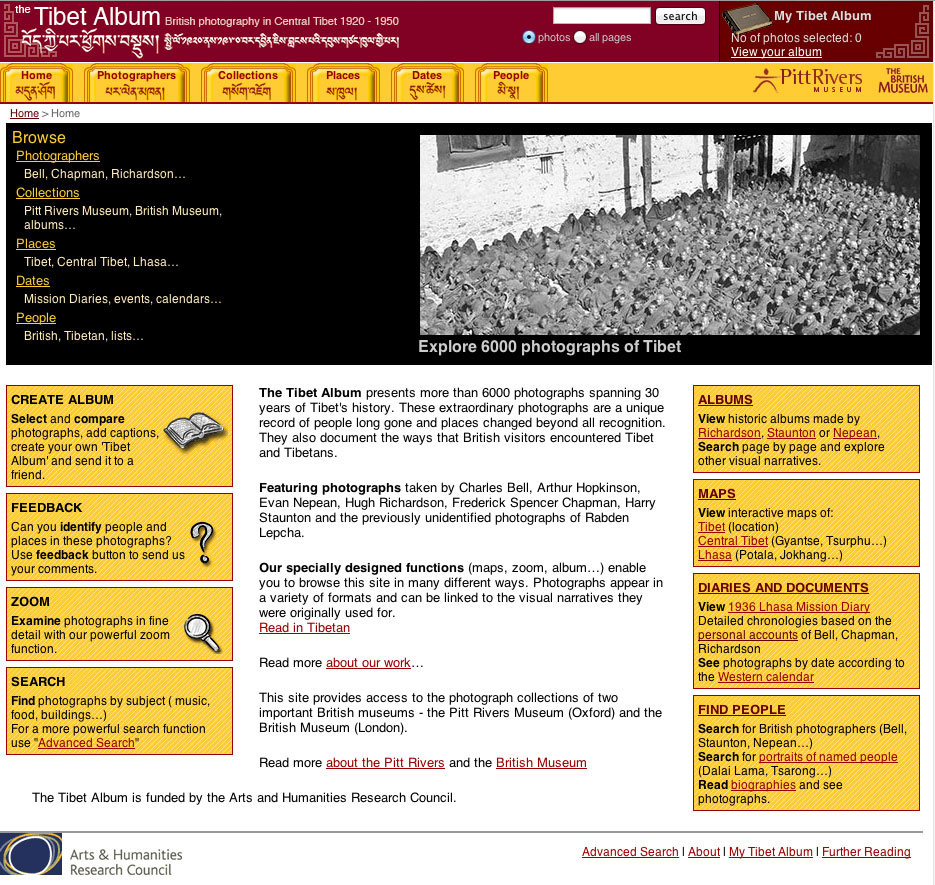
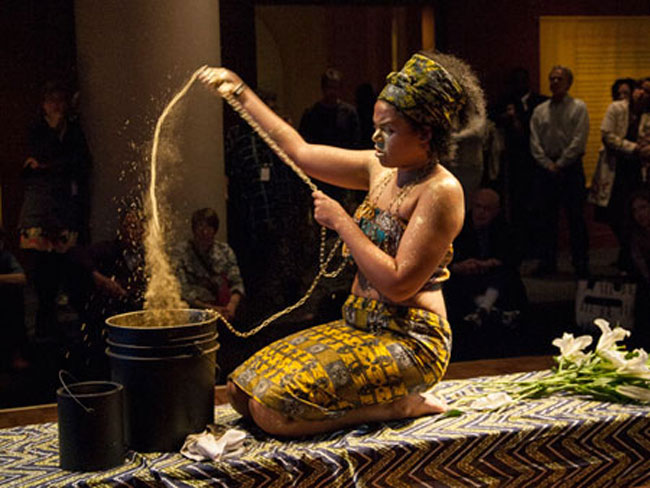
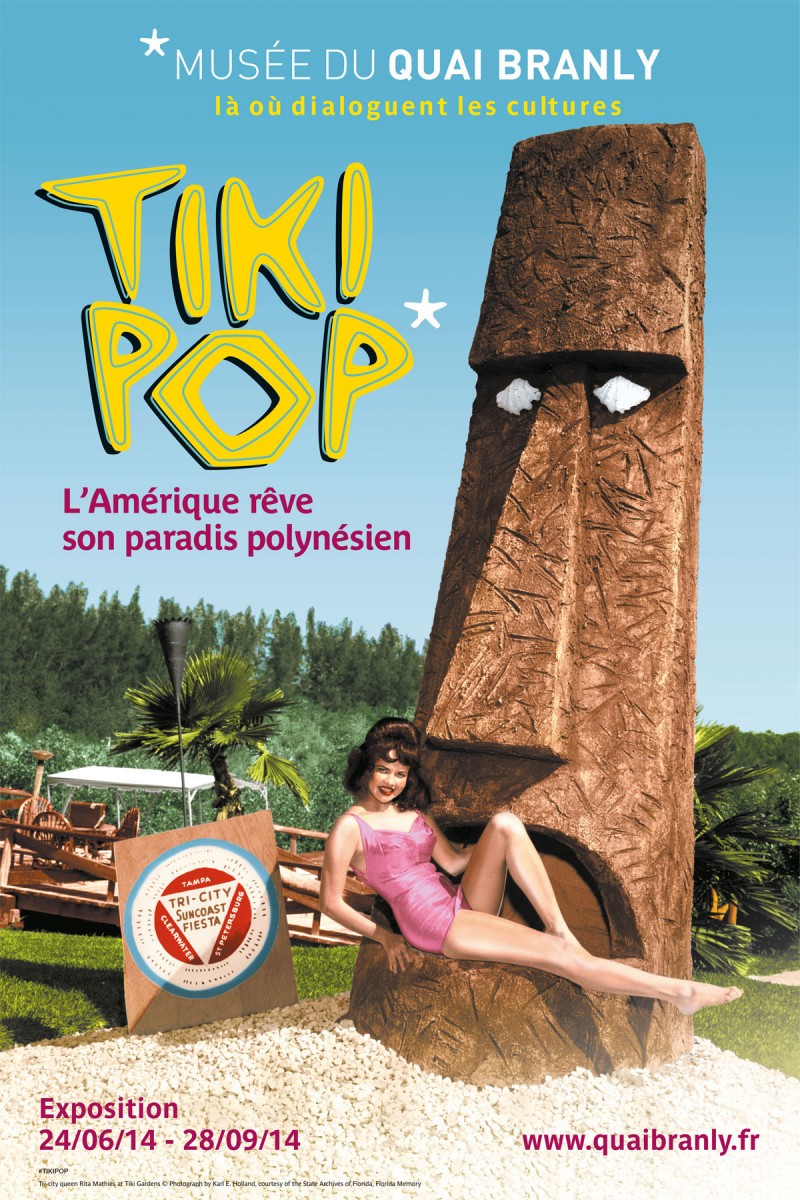
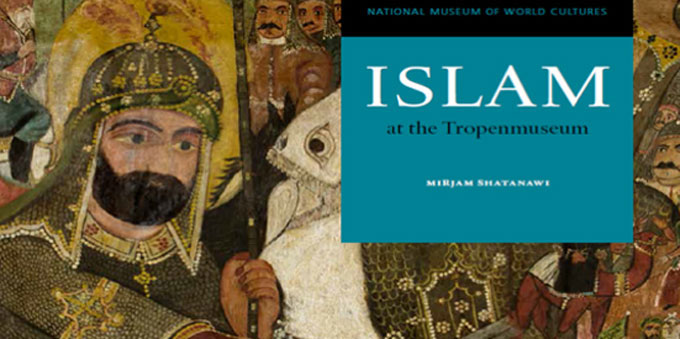
![Fig. 7. The Museum of Anthropology (MOA) of the University of British Columbia in Vancouver, Canada: the interlacing of museology and social anthropology. [Photo: John Mitchell]](https://www.archaeology.wiki/wp-content/uploads/2015/05/Solomon_7_en.jpg)
